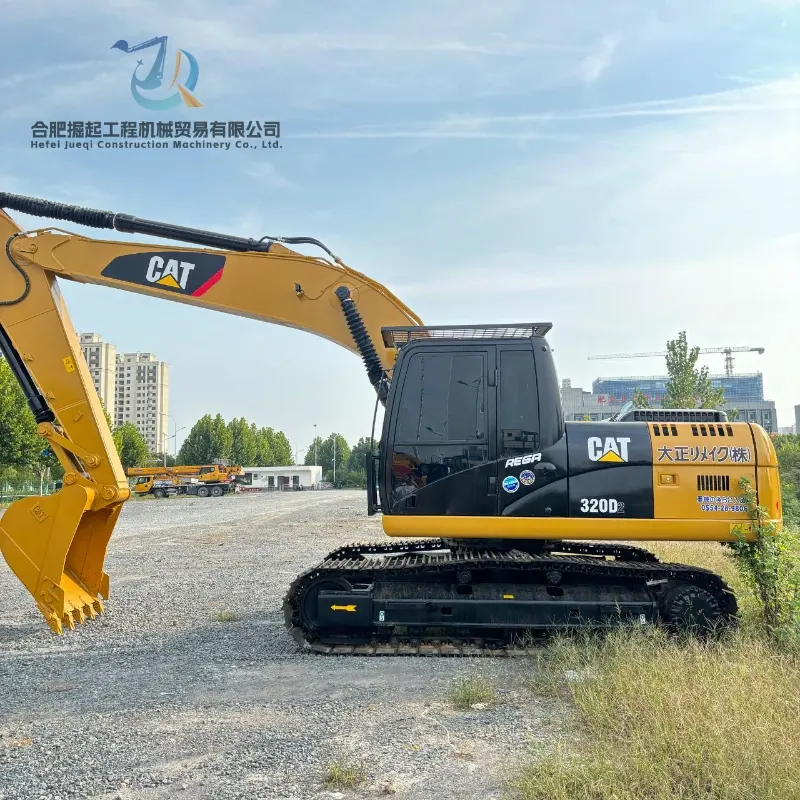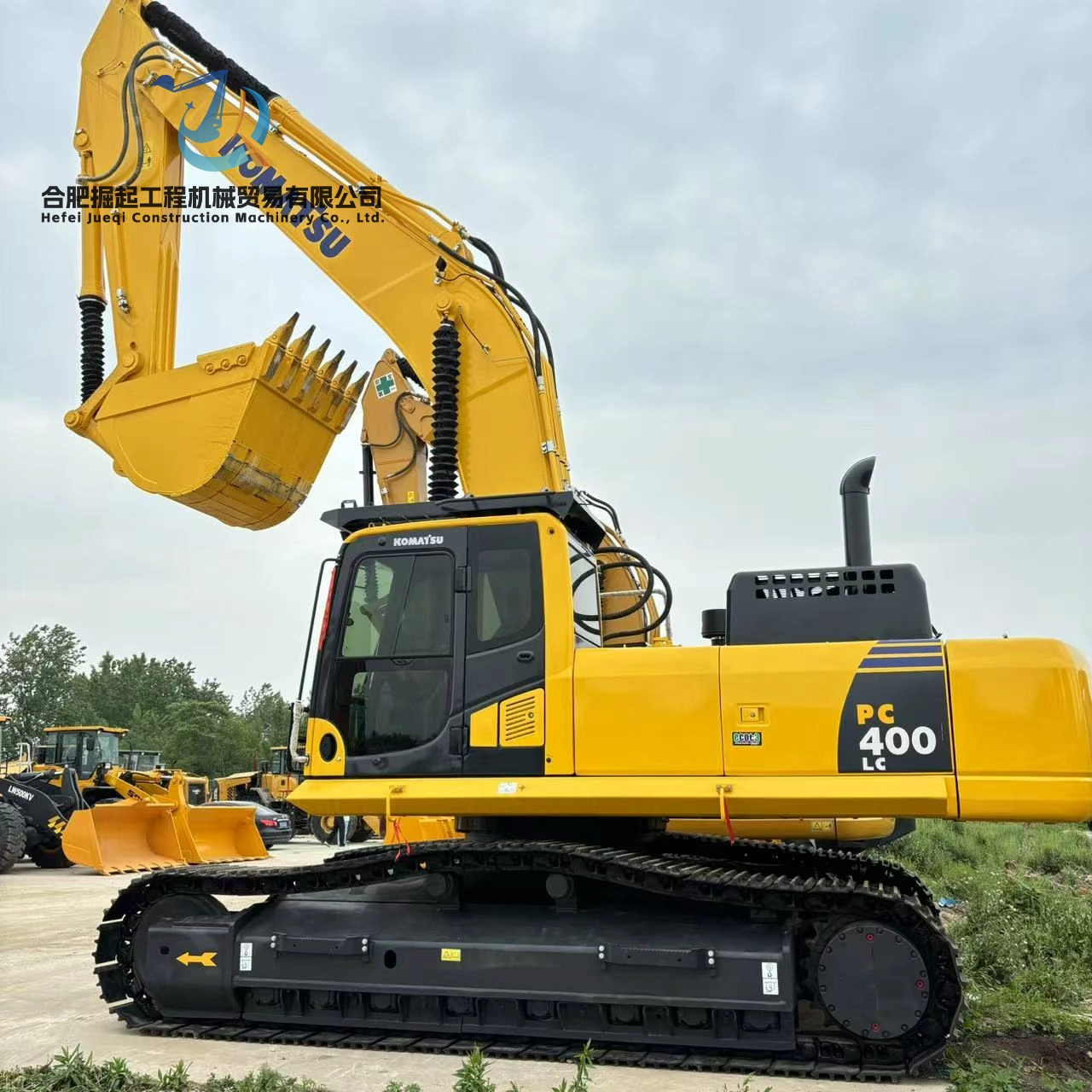Как купить качественный подержанный экскаватор: полное руководство Полное руководство
Время выпуска: 2025-03-13
Покупка подержанного экскаватора может стать экономичным решением для получения мощности и эффективности, необходимых для ваших строительных проектов. Однако выбор подходящей машины требует тщательного изучения и тщательного осмотра. В этом подробном руководстве мы расскажем вам о необходимых шагах, которые помогут вам приобрести качественный подержанный экскаватор, который прослужит долгое время.
1. Определите свои потребности перед покупкой
Прежде чем вы выйдете на рынок, крайне важно определить свой требования к экскаватору. Рассмотрим следующее:
- Размер и вес: Экскаваторы бывают разных размеров, от компактных до больших. Выберите тот, который подходит для вашего рабочего пространства.
- Вид работы: Вам нужен экскаватор для копания, подъёма или сноса? Подберите оборудование под ваши задачи.
- Вложения: Убедитесь, что экскаватор совместим с необходимым вам навесным оборудованием, таким как ковши, гидравлические молоты или шнеки.
2. Изучите надежные бренды экскаваторов
Инвестирование в известную компанию марка экскаватора Может сэкономить вам деньги на ремонте и обслуживании в долгосрочной перспективе. Популярные бренды:
- Гусеница (CAT): Известен своей долговечностью и высокой производительностью.
- Комацу: предлагает прочные и надежные машины с хорошей стоимостью при перепродаже.
- Вольво: Известен своей топливной экономичностью и комфортом для оператора.
- Хитачи: Предлагает передовые технологии и превосходную экономию топлива.
3. Тщательно осмотрите экскаватор.
А осмотр подержанного экскаватора Важно перед покупкой. Основные моменты, которые следует проверить:
- Состояние двигателя: Обратите внимание на любые утечки или необычные шумы, так как это может быть признаком проблем с двигателем.
- Гидравлическая система: Проверьте плавность работы рукояти, стрелы и ковша.
- Гусеницы и ходовая часть: Проверьте гусеницы на износ. Замена гусениц может быть дорогостоящей.
- Цилиндры и шланги: Проверьте наличие утечек и трещин в гидравлических цилиндрах.
- Рама и кузов: Осмотрите конструкцию на предмет наличия повреждений или следов ремонта, которые могут повлиять на ее целостность.
4. Просмотр истории обслуживания
Запросите записи о техническом обслуживании, чтобы убедиться в том, что машина обслуживалась надлежащим образом. Регулярное обслуживание Может продлить срок службы экскаватора. Обратите внимание на:
- Регулярная замена масла
- Техническое обслуживание гидравлической системы
- Обслуживание путей и ходовой части
5. Проверьте экскаватор в действии
Где это возможно, проверить экскаватор Прежде чем совершить покупку, оцените работу машины:
- Производительность копания: Проверьте его способность копать плавно и эффективно.
- Стабильность: Убедитесь, что он устойчив под нагрузкой и при подъеме тяжелых предметов.
- Шум и вибрация: Чрезмерный шум или вибрация могут указывать на механические проблемы.
6. Проверка на износ
Хотя определенный износ неизбежен в подержанной машине, чрезмерные повреждения могут привести к дорогостоящему ремонту:
- Износ гусениц: Осмотрите гусеницы на предмет трещин и признаков чрезмерного износа.
- Износ ковша: Проверьте на наличие значительных повреждений или истончений.
- Структурные повреждения: Ищите признаки изгиба или сварки рамы.
7. Подтвердите право собственности и титул
Убедитесь, что продавец предоставляет доказательство права собственности и что нет никаких правовых споров, связанных с машиной. Важно подтвердить, что экскаватор имеет четкое название перед покупкой.
8. Оцените прилагаемые вложения
Иногда подержанные экскаваторы поставляются с дополнительным навесным оборудованием, например, ковшами или рыхлителями. Оцените это навесное оборудование. качество и совместимость с моделью экскаватора. Убедитесь, что они находятся в хорошем рабочем состоянии и представляют ценность.
9. Проведите независимую проверку
Если вы не эксперт, рассмотрите возможность найма стороннего механика для проведения осмотра. Опытный специалист сможет выявить потенциальные проблемы, которые вы могли упустить, гарантируя, что вы не получите неисправную машину.
10. Сравните цены и рыночные ставки
Проведите исследование на тему цены на экскаваторы на рынке, чтобы убедиться в честности сделки. Сравните запрашиваемую цену с аналогичными машинами той же модели, возраста и состояния.
11. Договоритесь о цене
Выбрав машину, которая соответствует вашим потребностям, попробуйте договориться о цене. Используйте любые выявленные во время осмотра проблемы как рычаг для снижения стоимости или попросите продавца выполнить необходимый ремонт.
12. Завершите сделку и оформите документы
После того, как вы определились с ценой, убедитесь, что все документы в порядке. Попросите чек, информацию о гарантии и любые другие необходимые документы, чтобы сделка прошла гладко.
13. Обслуживайте свой экскаватор
После покупки, регулярное техническое обслуживание обеспечит идеальное состояние экскаватора. Соблюдайте рекомендации производителя по интервалам технического обслуживания и следите за работой машины, чтобы избежать неожиданных поломок.
Заключение
Покупка подержанного экскаватора может стать отличным способом сэкономить деньги и при этом получить мощную машину для вашего проекта. Следуя инструкциям в этом руководстве, вы сможете принять взвешенное решение и инвестировать в надежное оборудование, которое прослужит вам долгие годы.




